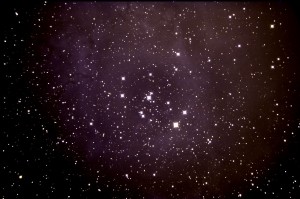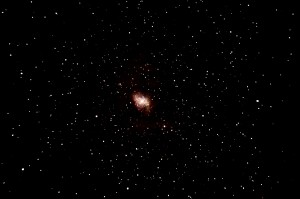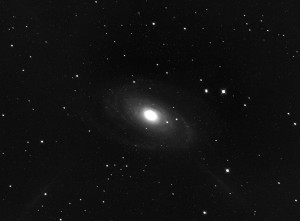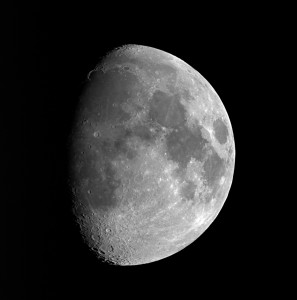Quick post here to get up some images I took tonight

The Rosetta Nebula is a vast cloud of dust and gas, extending over an area of more than 1 degree across, or about 5 times the area covered by the full moon. Its parts have been assigned different NGC numbers: 2237, 2238, 2239, and 2246. Within the nebula, open star cluster NGC 2244 is situated, consisted of the young stars which recently formed from the nebula's material, and the brightest of which make the nebula shine by exciting its atoms to emit radiation. Star formation is still in progress in this vast cloud of interstellar matter; a recent finding of a very young star with a Herbig-Haro type jet by astronomers at the NOAO has been announced in Press Release NOAO 04-03 on January 22, 2004.

The Crab Nebula (catalogue designations M1, NGC 1952, Taurus A) is a supernova remnant and pulsar wind nebula in the constellation of Taurus. The nebula was observed by John Bevis in 1731; it corresponds to a bright supernova recorded by Arab, Chinese and Japanese astronomers in 1054. At X-ray and gamma-ray energies above 30 keV, the Crab is generally the strongest persistent source in the sky, with measured flux extending to above 1012 eV. Located at a distance of about 6,500 light-years (2 kpc) from Earth, the nebula has a diameter of 11 ly (3.4 pc) and expands at a rate of about 1,500 kilometers per second. It is part of the Perseus Arm of the Milky Way Galaxy.

Messier 81 (M81, NGC 3031) in Ursa Major is one of the most conspicuous galaxies in the sky, and one of the nearest beyond the Local Group. It is a conspicuous spiral galaxy.

The Moon is the only natural satellite of the Earth,and the fifth largest satellite in the Solar System. It is the largest natural satellite of a planet in the Solar System relative to the size of its primary, having a quarter the diameter of Earth and 1⁄81 its mass. The Moon is the second densest satellite after Io, a satellite of Jupiter. It is in synchronous rotation with Earth, always showing the same face; the near side is marked with dark volcanic maria among the bright ancient crustal highlands and prominent impact craters. It is the brightest object in the sky after the Sun, although its surface is actually very dark, with a similar reflectance to coal. Its prominence in the sky and its regular cycle of phases have, since ancient times, made the Moon an important cultural influence on language, calendars, art and mythology. The Moon
